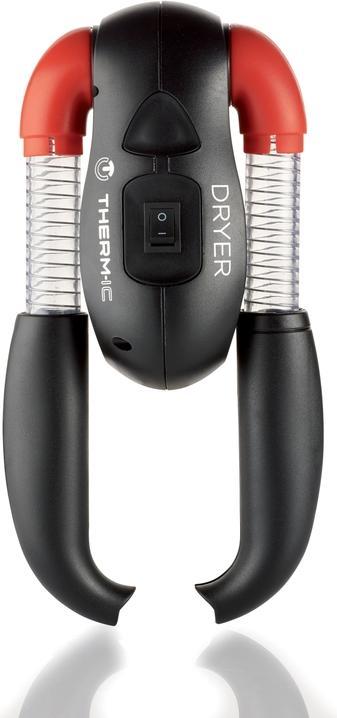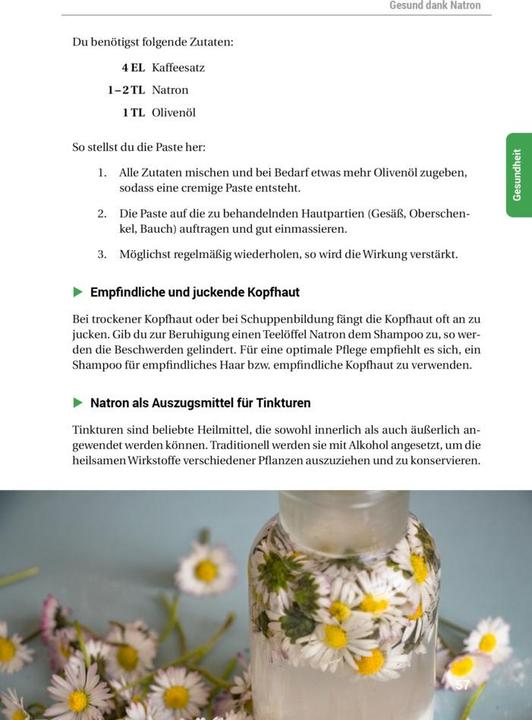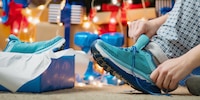

3 steps to stop smelly shoes in their tracks
Sweaty sports shoes, wet sneakers or musty boots can make noses wrinkle. In my everyday battle against smelly shoes, I rely on a piece of technology, a household remedy and a wild card from the animal range.
In recent years, I’ve stuffed more newspapers into shoes than I’ve read. That’s what active family life looks like. Workouts here, school activities there, rainy day fun – you know the drill.

In summer it gets sweaty, in autumn it’s often wet, and in winter, it’s not just dripping wet shoes entering the house, but dripping gloves too. So I don’t get very far with newspaper alone when I want to use the things again the next day. After all, only dry shoes are good shoes. And those that don’t develop into a bacterial biotope overnight. That’s why I decided to invest in a shoe dryer.
Step 1: dry thoroughly
One winter I treated myself to an upgrade – the Therm-ic Refresher. It’s an electric (ski) boot dryer that was initially only used for winter sports, but now runs at full speed many times of the year. Whenever the sun isn’t strong enough, I get it out. I’ve got into the habit of pulling pairs of shoes prone to stinking out of gym bags or training bags on regular inspection rounds, and treating them with one of these.
The downside? You have to plug it in. The model I bought in 2022 has a power consumption of 50 watts; in the current manual it’s specified as 60 watts. So, the Refresher uses about as much power as an old light bulb or my laptop. But it gets the job done.
To do this, I simply have to extend the two telescopic arms of the device, push them as far as possible into the toe area of the shoe and switch them on. The cheaper red version runs continuously, whereas my blue model has a timer that can be set for one, three or six hours.
Slightly sweaty shoes are dry after an hour. If they’re damp, I go for three and then check whether they need longer. Wet shoes dry in six hours overnight, as the fan distributes warm air and heats up the plastic arms.
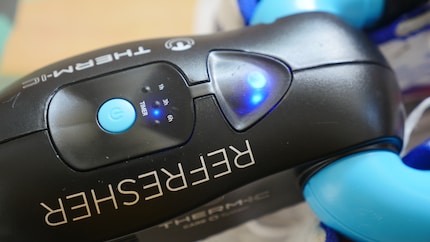
The device doesn’t work like a hair dryer. Its airflow’s quite weak, and the manufacturer states that air emerging from the shoe is about 20 degrees higher than room temperature. With that in mind, if you use it in a cool cellar, the result could be significantly worse.
I’m happy with the device, and so are many others. However, it’s not all sunshine and rainbows among the positive reviews. People mention defects shortly after the warranty period has expired or criticise the overall quality and value for money. It’s possible that the cheaper «dryer» is the more honest product. I find it hard to believe that the «Refresher» uses UV light to prevent the development of bacteria and germs, at least I can’t tell the difference in smell. That’s why I prefer to use a tried and tested household remedy.
Step 2: neutralise odours
When the shoes are dry or at least almost dry, I sprinkle baking soda inside, spread the powder over the entire sole and leave it to work overnight. There are several advantages to the household miracle powder. Firstly, it absorbs more moisture, making life difficult for bacteria. Secondly, as an alkaline substance, baking soda actively neutralises nasty odours.
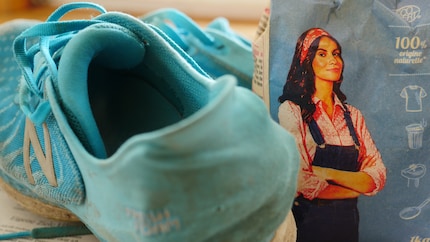
It doesn’t just mask the stench, it removes it. This works well up to the slightly smelly sneaker category and is also environmentally friendly. The only somewhat laborious act is tapping or vacuuming the powder out of the shoes the next day. Once this is done, most shoes are fresh enough for everyday use again.
But some cases need heavy-duty cleaning. For particularly hard-wearing sports shoes that are brought home drenched in sweat every other day, I reach for the last wild card.
Step 3: for tough smells, a tough solution
I’d resorted to a shoe deodorant for some time. One of those sprays that’s offered at a 30 per cent discount at checkout and sprays in two directions when you press it upside down in your shoe. It’s quick to buy and quick to use. It works to some extent, but not the best.
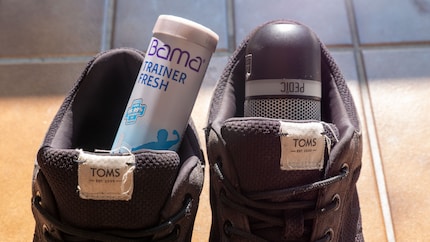
When I looked at the ingredients and warnings, my doubts really crept in: extremely flammable aerosol. Contains a biocide (DDAC). Only use outdoors or in well-ventilated areas. In case of eye contact, rinse for several minutes. May cause allergic reactions. Dispose of partially emptied containers as hazardous waste. Not exactly great. That’s when I decided to switch to a product that we normally use for cage cleaning.
Surely if something helps against the smell of pet urine and vomit, it won’t harm sports shoes – it’s neither toxic nor highly flammable. It contains biological microorganisms that attack the source of the odour and then die off. At around a tenth of the price per litre of shoe deodorisers, it works just as well and smells just as fresh. Fortunately, the smell gradually dissipates along with the shoe stench. When nothing else can cut it, this is the best solution for me.
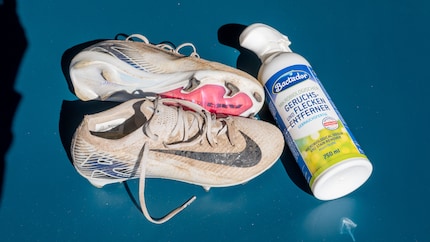
More useful tips?
Of course, in addition to the good old newspaper and my preferred methods, there’s a whole range of products that also promise dry and fragrant shoes: moisture-absorbing bags, cedar wood dryer bags or Boot Bananas, for example.
Irradiation (which has never convinced me) also seems to have support: two Indian academics just won the Ig Nobel Prize for their design idea of a shoe rack equipped with UVC light. This alternative award honours scientific achievements that «first make people laugh, then make them think».
So then, what do you think? Which product removes a stench best?
Simple writer and dad of two who likes to be on the move, wading through everyday family life. Juggling several balls, I'll occasionally drop one. It could be a ball, or a remark. Or both.
Practical solutions for everyday problems with technology, household hacks and much more.
Show all